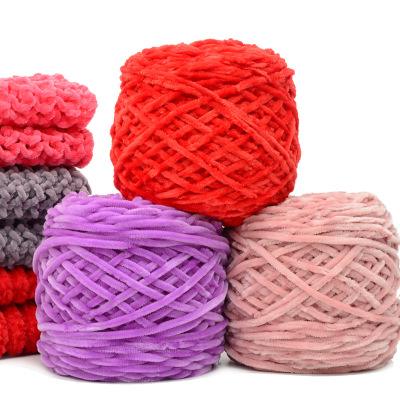What kind of fancy yarn is Chenille yarn?
Chenille yarn has various postures and varieties, which can create rich visual effects and meet various planning requirements, especially in the field of decorative fabrics, which has become quite popular in recent years. The chenille yarn with a special linear structure, combined with appropriate drawings and texture planning, can give people a warm feeling and elegant temperament. This article uses high shrinkage materials and develops a concave structure through reasonable arrangement, matching, and post-processing.
Developing a new type of chenille yarn fabric using high shrinkage polyester. This article mainly elaborates on the formation principle of the concave convex effect of fabrics from two aspects: the use of materials and the arrangement of combinations, further reflecting the abundant characteristics of chenille yarn in fabrics.

The theoretical method for controlling the density of chenille yarn has been selected, and four types of chenille yarns have been selected for practical verification. The results show that the deviation between the calculated linear density of chenille yarn based on the theoretical method and the actual measured linear density is below ± 7.5%. The fineness and number of core yarns, the fineness and number of velvet yarns, and the width of velvet yarns have important effects on the linear density of chenille yarn
Chenille yarn, also known as chenille yarn or plush yarn, is a fancy yarn with the characteristics of full, fluffy, soft to the touch, and bright colors. The fabric woven from it is solid and lightweight, and these characteristics are widely used in many fields such as home textile decorative fabrics, woven knitted clothing, automotive decorative products, and antique fabrics, which are deeply loved by people The range of planned changes in the density of chenille yarn is relatively large.
Article source: Fancy Thread Manufacturer
-
05-27
The reason why fabrics containing spandex are prone to yellowing
Spandex is a commonly used fiber variety in our daily lives, characterized by good elasticity, low fineness, high elastic modulus (cracking elongation can reach 400-800), and low specific gravity. Spa
-
04-24
Colored non dyed nylon with synthetic fiber raw material
The current conventional fiber coloring mostly uses yarn dyeing method, which has long process, high loss, high cost, and the product has color difference and low color wash fastness. Yarn is prone to
-
03-26
What are the characteristics of non dyed spandex?
Non dyed spandex has also been widely used in recent years. Non dyed spandex fiber can be blended with fibers such as nylon, polyester, acrylic, cotton, wool, etc., which can give fabrics excellent el
-
02-24
The influence of yarn structure on fabrics
The basic characteristics of yarn include its appearance and shape, twisting characteristics, fiber transfer and distribution characteristics in the yarn, as well as the surface fuzz and internal loos
